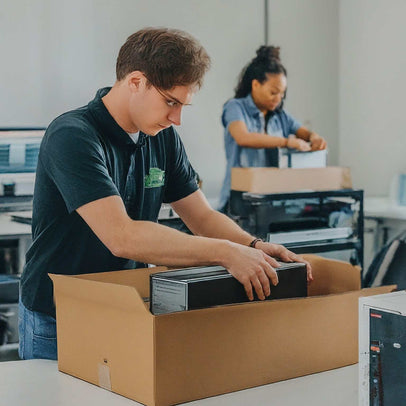Packaging 101: The Complete Guide
- Packaging 101
- Types of Packaging
- Aseptic Packaging
- Blister Packaging
- Biodegradable Packaging
- Bulk Packaging
- Carbon Neutral Packaging
- Circular Packaging
- Clamshell Packaging
- Compostable Packaging
- Cornstarch Packaging
- Corrugated Packaging
- Discreet Packaging
- Ecommerce Packaging
- Flexible Packaging
- Frustration Free Packaging
- Retail Packaging
- Secondary Packaging
- Smart Packaging
- Sustainable Packaging
- What is a PR Package?
- What is a Poly Mailer?
- Packaging Design Ideas
- AI Packaging Design
- Bakery Packaging Ideas
- Bath Bomb Packaging Ideas
- Bath Salt Packaging Ideas
- Body Butter Packaging Ideas
- Body Oil Packaging Ideas
- Body Scrub Packaging Ideas
- Brownie Packaging Ideas
- Cake Packaging Ideas
- Cake Pop Packaging Ideas
- Candle Packaging Ideas
- Candy Packaging Ideas
- Canva Packaging Design
- Chocolate Packaging Ideas
- Cinnamon Roll Packaging Ideas
- Clothing Packaging Ideas
- Coaster Packaging Ideas
- Coffee Bag Design Ideas
- Cookie Packaging Ideas
- Cosmetics Packaging Design
- Cotton Candy Packaging Ideas
- Cupcake Packaging Ideas
- DIY Packaging Ideas
- Dog Treat Packaging Ideas
- Food Packaging Ideas
- Empanada Packaging Ideas
- Etsy Packaging Ideas
- French Fries Packaging Ideas
- Frozen Food Packaging Ideas
- Hair Extension Packaging Ideas
- Handbag Packaging Ideas
- Jewelry Packaging Ideas
- Keychain Packaging Ideas
- Lash Packaging Ideas
- Lip Gloss Packaging Ideas
- Macaron Packaging Ideas
- Minimalist Packaging Ideas
- Mug Packaging Ideas
- New Employee Welcome Kit Ideas
- Packaging Colors
- Packaging Inserts Ideas
- Packaging Logo Design
- Packaging Typography
- Perfume Box Design Ideas
- Pizza Box Design Ideas
- Popcorn Packaging Ideas
- Scarf Packaging Ideas
- Skincare Packaging Design Ideas
- Soap Packaging Ideas
- Sock Packaging Ideas
- Sticker Packaging Ideas
- Sunglass Packaging Ideas
- Sustainable Packaging Ideas
- Tea Packaging Ideas
- Wax Melt Packaging Ideas
- Weed Packaging Ideas
- T-Shirt Packaging Ideas
- Wine Packaging Design Ideas
- What is a Packaging Engineer?
- Types of Packaging Materials
- Chipboard vs Cardboard
- Compostable Packaging Materials
- Alternatives to Plastic Packaging
- Edible Packaging Materials
- Food Packaging Materials
- Are Poly Mailers Recyclable?
- How to Recycle Cardboard Boxes
- How to Recycle Packaging Materials
- Medical Device Packaging Materials
- Mono Material Packaging
- Pharmaceutical Packaging Materials
- Plastic Food Packaging
- Protective Packaging Materials
- Reusing Packaging Materials
- Types of Packaging Foam
- Void Fill Packaging
- What is Chipboard?
- What is Kraft Paper?
- Offset vs Digital Printing
- RGB vs CMYK Printing
- Screen Printing vs Digital Printing
- Screen Printing vs Sublimation
- What is a Dieline in Packaging?
- What is Die Cutting?
- What is Digital Printing?
- What is Flexographic Printing?
- What is Glassine Paper?
- What is Offset Printing?
- What is Spot UV Printing?
- Why is 300 DPI Good for Printing?
- How to Estimate Shipping Costs
- How to Pack Glass for Shipping
- How to Mail a Bubble Mailer
- How to Make a Shipping Label
- How To Measure Box Dimensions and Sizes
- How to Ship Alcohol
- How to Ship Artwork
- How to Ship Books
- How to Ship a Cake
- How to Ship Candles
- How to Ship Clothes
- How to Ship Cookies
- How to Ship Food
- How to Ship a Laptop
- How to Ship a PC
- How to Ship Plants
- How to Ship Shoes
- How to Ship Vinyl Records
- Packaging Symbols
- Shipping Large Items
- What is a Delivery Exception?
- What is Shipping Insurance?

Discover Phillip Akhzar’s journey, the Founder and CEO of Arka, bringing 16 years of expertise in packaging and supply chain logistics. Read more on Arka.
The Importance of Shipping a PC Safely
Whether you're moving to a new location or sending your computer for repairs, understanding how to ship a PC is essential for its well-being.
• Protection Against External Forces: When it comes to shipping a computer, the journey can be rough; from bumpy roads to handling at various checkpoints, your PC may endure external forces that could potentially damage delicate components. Learning how to pack a PC for shipping ensures it arrives unharmed at its destination.
• Preventing Internal Damage: Within your computer's sleek exterior lies a network of sensitive electronics; properly securing these components is vital in preventing internal damage during transit. Knowing how to pack a computer for shipping safeguards against potential mishaps that could compromise the functionality of your device.
• Minimizing the Risk of Data Loss: A PC is not just a physical entity but a valuable data repository. Learning how to ship a PC safely includes understanding the importance of backing up data before transit; taking this precaution minimizes the risk of data loss in case of unforeseen circumstances during shipping.


How to Pack a PC for Shipping: 9 Easy Steps
Shipping a computer may seem like a daunting task, but with a few simple steps, you can ensure your PC arrives at its destination safe and sound; follow this guide on how to Ship a PC for a hassle-free shipping experience.
Assess Your PC for Shipment
Before diving into the packing process, assess your PC to identify fragile components and areas that need special attention during shipping; this step ensures a strategic approach to packing and minimizes the risk of damage.
Gather Packing Materials
Collecting the right packaging materials is crucial for a secure shipment; prioritize anti-static packaging to safeguard sensitive electronic components. Ensure you have quality custom packing tape, padding materials, and sturdy shipping or mailer boxes.
Disassemble Packing Components
Carefully disassemble your PC, removing components such as the graphics card, RAM, and any other detachable parts; place these items in anti-static bags and secure them within the packaging. This step prevents internal jostling during transit.
Secure the Hard Drive
The hard drive is a critical component, and securing it properly is vital; if possible, place it in its original packaging. If not, use anti-static material and ensure it is well-padded within the box to absorb any shocks.
Select the Right Shipping Box
Choosing the right shipping box is essential to protect your PC; consider using Arka’s custom shipping boxes for a reliable and durable option. The box should be slightly larger than your disassembled PC, allowing space for adequate padding.
Fill Empty Spaces
To prevent internal movement, fill empty spaces in the box with additional padding; these void-fill packaging materials can be bubble wrap, packing peanuts, or foam inserts. Tight packaging minimizes the risk of components shifting during transit.
Seal the Box Securely
Use quality packing tape to seal the box securely. Double-check for any openings or weak points, reinforcing them if necessary; a well-sealed box is crucial to ensuring the safety of your PC throughout the shipping process.
Address and Label the Package
Clearly write the shipping address and label the package as fragile; this ensures careful handling by the shipping carrier. Provide both the sender's and recipient's contact details for added security.
Choose a Reliable Shipping Carrier
Selecting a reliable shipping carrier is the final step in ensuring your PC reaches its destination safely. Research carriers with a good track record for handling delicate electronics, and consider purchasing insurance for added peace of mind.

How to Ship a Computer: Labeling and Documenting
Let's delve into the essential steps, focusing on how to ship a PC seamlessly, with special attention to labeling and documenting.
• Securely Pack Your Computer: Protect your computer from the bumps and jostles of transit by wrapping it in bubble wrap; place it snugly in the center of the box, surrounded by ample padding. Fill any remaining gaps with packing materials to prevent shifting during transport. This step is crucial for safeguarding your PC from potential damage.
• Labeling Your Package: When it comes to labeling, simplicity is key; clearly write the recipient's address and your return address on the designated areas of the box. Don't forget to affix any shipping labels provided by the courier service. This ensures that your package reaches its destination without any hiccups.
• Documenting for Peace of Mind: While shipping a computer, documenting its current state is a wise precaution. Take photographs or make a checklist of the components and their conditions before sealing the box. This documentation can serve as a reference point in case of any disputes or issues upon arrival.
• Additional Tips: For added security, consider purchasing insurance for your shipment. This extra layer of protection can provide peace of mind, especially when dealing with valuable electronic equipment.


Shipping Insurance and Cost Considerations
In the world of e-commerce and tech, understanding how to ship a PC efficiently while considering shipping insurance and cost implications is crucial; whether you're a seller dispatching a computer or an individual sending a personal device, dealing with returns and damages is a common concern.
•Dealing with Returns and Damages: Shipping insurance acts as a safety net, especially when shipping fragile items like a PC; In the unfortunate event of damage during transit, having insurance ensures you won't be left empty-handed. Be sure to carefully read the terms of your chosen insurance provider to understand the coverage for returns and damages.
• Factors Affecting the Cost: The cost of shipping a computer is influenced by various factors. Weight, dimensions and destination are the primary contributors; shipping companies also consider the shipping method – whether it's standard ground shipping or expedited services. Additionally, the value of your PC affects insurance costs. Opting for a faster delivery service and higher insurance coverage may increase shipping expenses.
• Ways to Minimize Shipping Expenses: Minimizing shipping expenses without compromising on safety is a priority. Proper packaging is crucial – use sturdy boxes, ample padding and consider double boxing for added protection. Researching different carriers and their rates can help you find the most cost-effective option. Also, check if the carrier offers discounted rates for shipping multiple items or if they have special promotions.


Final Thoughts
Mastering how to ship a PC safely involves meticulous packaging and strategic considerations. Ensuring your computer's security during transit requires expert tips such as secure packaging, proper labeling, and choosing the right shipping method.
Companies seeking reliable custom packaging solutions can turn to Arka for their expertise in meeting the unique needs of shipping delicate electronics.
FAQs on Shipping a Computer
Can I use any box to ship my PC?
It's not recommended; choose a sturdy, appropriately sized box to ensure the PC is securely packed and protected during transit.
What precautions should I take for international PC shipments?
For international shipments, use extra padding, check import regulations, and consider shipping insurance for added protection against potential damages or customs issues.

